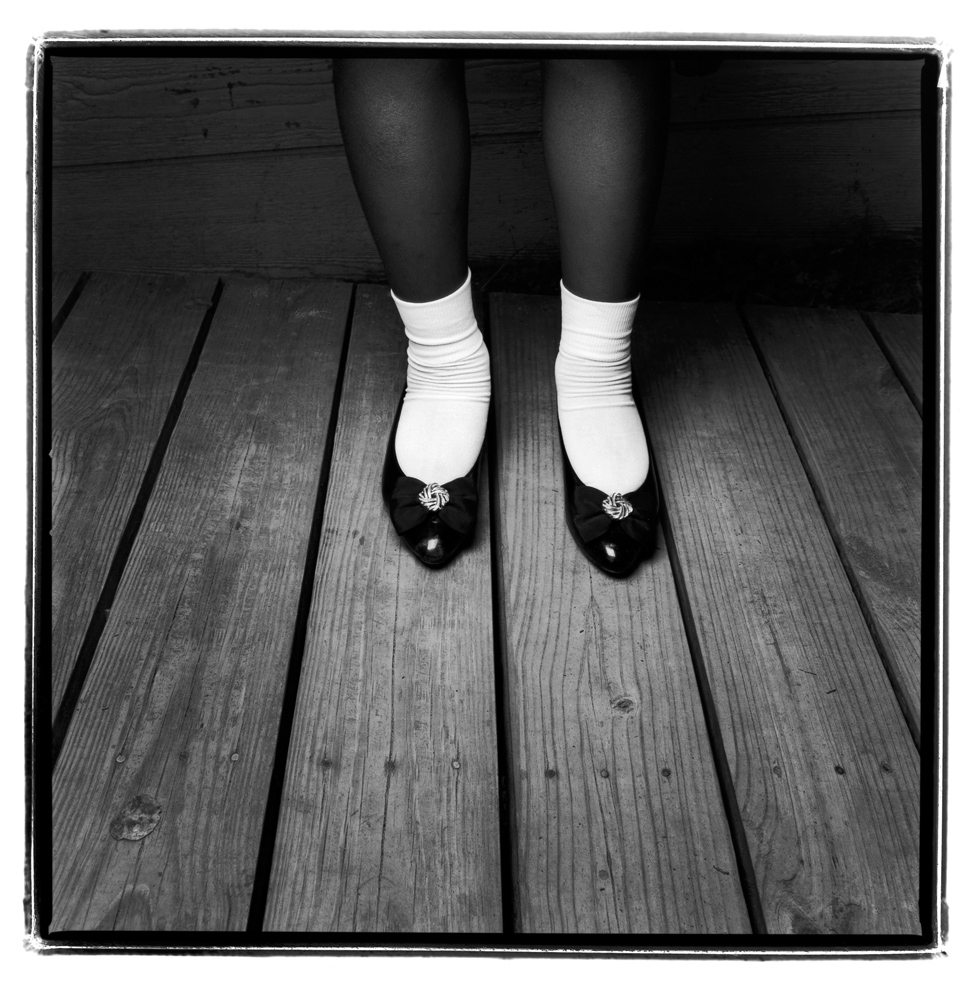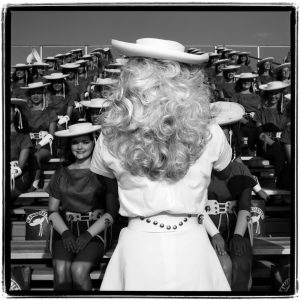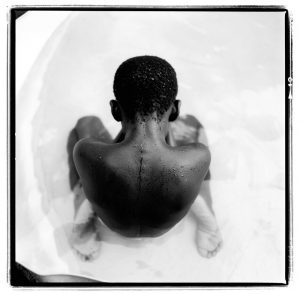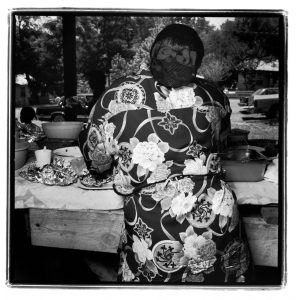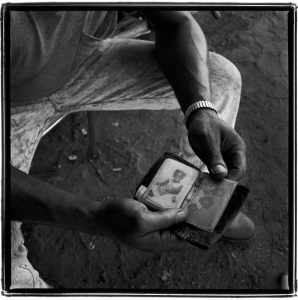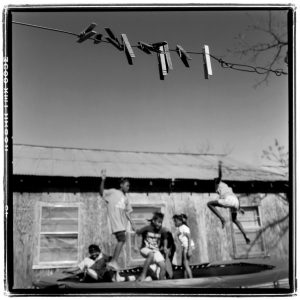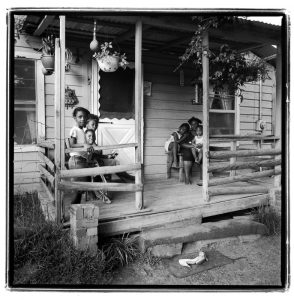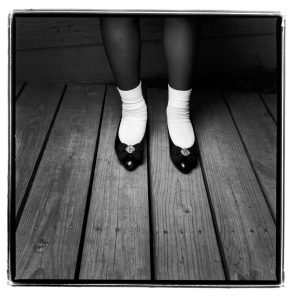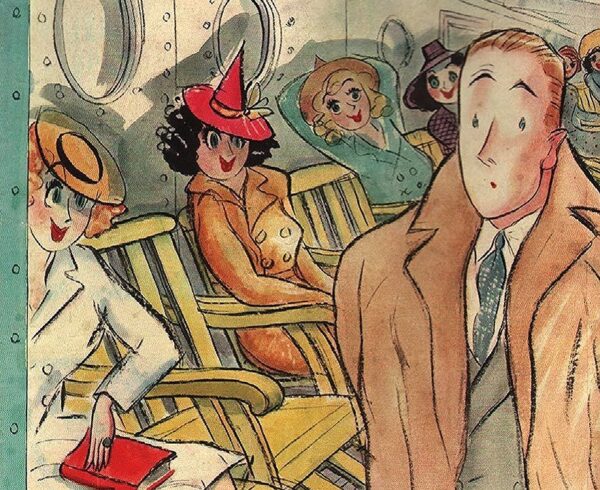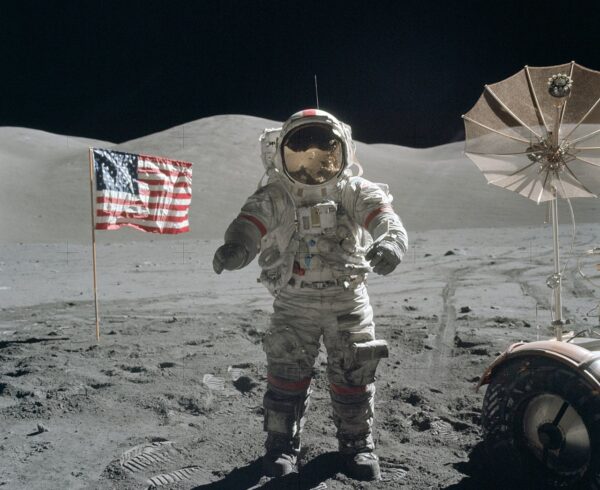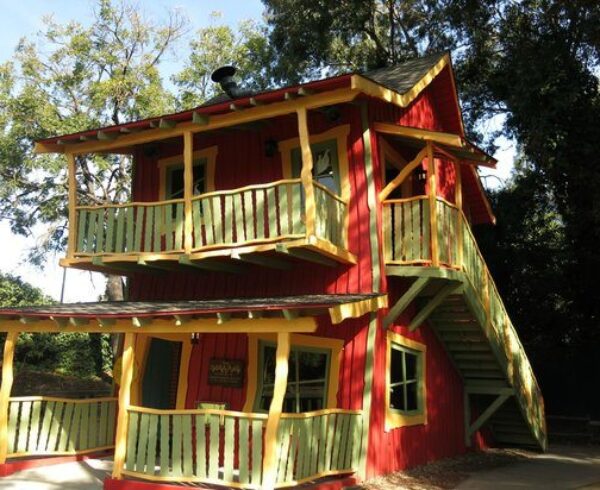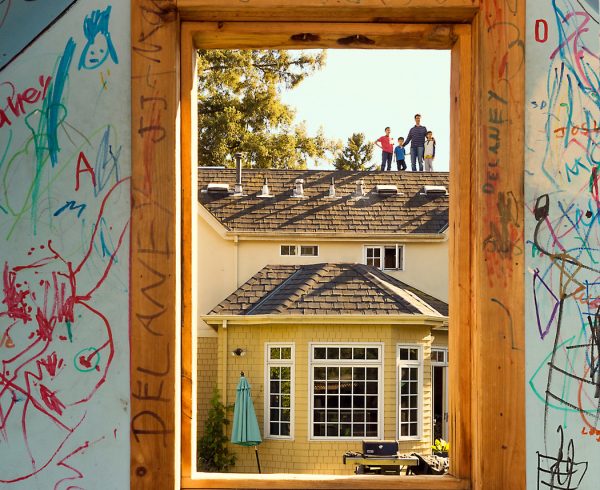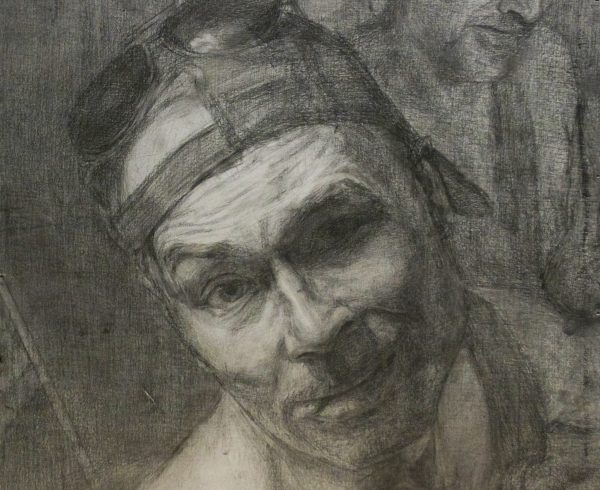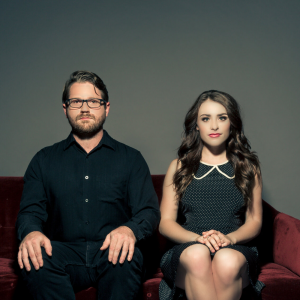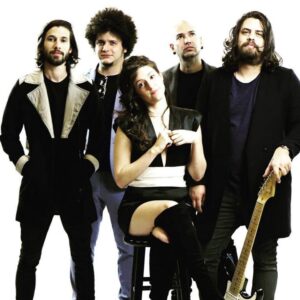The title doesn’t seem to make any sense, but the words in it represent the variety of subjects photographer, O.Rufus Lovett, has explored during his career. A retrospective exhibition of his work from the past 40 years, The Last Picture Show, is on display from August 22nd to October 9th at the Anne Dean Tuck Fine Arts Gallery at Kilgore College in Kilgore, Texas.
O. Rufus Lovett has lived in Longview, Texas for the past 40 years, teaching photography at Kilgore College and working as a fine art and editorial photographer. His editorial work has appeared in Texas Monthly, People magazine, Gourmet, Marie Claire and others. The University of Texas Press has published three of his photographic books, Weeping Mary in 2006, Kilgore Rangerettes in 2008, and Barbecue Crossroads: Notes and Recipes from a Southern Odyssey in 2013.
It’s a cliche, but true that the occasion of a retrospective is a time of looking back as well as to the future. It seemed like it might be a good time for a conversation with Rufus about these things. Texas readers are likely familiar with some of these images but may not know the man behind them. I am a long time fan of both the man and the work and wanted to introduce both to those who haven’t met him yet.
O. Rufus Lovett’s fine art photographs are in the permanent collections of the Museum of Fine Arts, Houston, The Harry Ransom Humanities Research Center at The University of Texas At Austin, the Birmingham Museum Of Art in Birmingham, Alabama and the Wittliff Gallery of Southwestern and Mexican Photography in San Marcos, Texas.
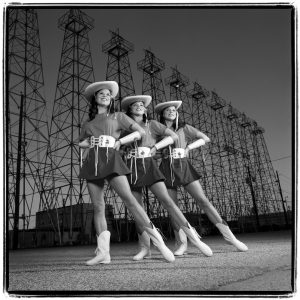
“Triplets,” Kilgore Rangerettes, 2004. This was also on the cover of Texas Monthly © O. Rufus Lovett
Mary McCleary: Tell me about your first camera and how you became interested in photography as a profession.
O. Rufus Lovett: My first camera was a medium square format Yashica twin lens reflex that my dad gave me to use for high school newspaper and yearbook photographs. My high school English teacher Ms Lee and Ms Horsefield, the yearbook advisor asked if I would be interested in being the photographer for their publications, knowing my dad had the means and know-how to get me started and produce the images they needed. It was the beginning of a great apprenticeship with my dad.
But the story is a little more interesting than that. I wanted to be a football player and as a high school freshman, I was a left tackle. My dad came to one of our home games. It wasn’t long after that game that we had a little chat when he said to me that girls liked photographers as much as they liked football players. Well that kind of sold me on the idea of photographing, and I thought less of the idea of being a football player. So I began carrying a camera and a notepad on the sidelines my sophomore year in high school. I later figured out that my dad realized what a poor football player I was, and I thought at the time he was right about the girls. I’ve never had a desire to play football again. I began photographing on the sidelines and wrote sports for a couple or three years and was published in the high school newspaper and the local paper as well, The Jacksonville News, in Jacksonville, Alabama.
Mary McCleary: What influences your work? Everyone always asks that, but they do because it’s interesting.
O. Rufus Lovett: I have had many photographic influences over the years. My dad was a photographer, so he was my first major influence. I left home at 18 to go to college in Texas, and my greatest influence there was my professor John Beck. He was young, energetic and a wonderful photographer who had completed his MFA at Ohio University. We are still great friends, and we correspond every year without fail. John introduced me to fine art photography. He taught expressive photography, work that comes from within rather that which is only for commercial purposes.
When completing my BA in Photography and Journalism at Sam Houston State University, I had decided I wanted to teach, so I looked for a Masters program which I found at East Texas State University. Nolan Bailey was a great teacher of commercial photography, so that gave me a wonderful balance of two worlds, applied photography and fine art photography. I like to think that I have used my education wisely by passing information that applied to both fields of study to my students, fine art photography and applied photography.
It would be difficult to list all the other influences in my own personal work but to name a few would be photographers Ansel Adams, Arnold Newman, Mary Ellen Mark, Elliott Erwitt, Walker Evans, Richard Avedon and Robert Frank. But many more are on my long list including many contemporaries.
My mother, who taught English literature and poetry, influenced my writing and enhanced the notion that each photograph is like a paragraph that tells a story and several photographs may become an essay.
My post-graduate work in art at Stephen F. Austin State University, University Of Houston and Brooks Institute made such a difference in the way I was able to loosen up my work and think beyond the obvious, an important strategy I preach to my students. In 1981, while assisting at the Ansel Adams Workshop in Yosemite, Arnold Newman taught me the importance of studying art, and that is when I decided to go back to grad school for those post graduate hours and travel to Paris, France to see and study the original work in person.
Mary McCleary: What percentage of your photos are never shown, because they aren’t quite good enough?
O. Rufus Lovett: Photographers are often asked “how many pictures did you take to get that one?” Well I don’t know, and I never count. Sometimes its just one or two or three or perhaps 20. I never count or care. I never ask a painter how much paint did it take to make a painting. (Laugh)
Mary McCleary: You are known for how you frame your images before shooting them. You don’t seem to crop them afterward. Tell me why you choose to work that way.
O Rufus Lovett: I have worked with square format film most of my life and have disciplined myself to standardize my approach for efficiency and consistency. However, this full-frame approach is not carved in stone, and I will post-crop images later if that will improve my interpretation. I find myself less critical regarding my in-camera cropping, as I have moved into the rectangle format of my digital camera. But I begin my visual experience by paying close attention to the edges of my frame, and I will try to make it work as I see it in the viewfinder. Anne Tucker, who wrote an essay in the Weeping Mary book, noted that I work in a way that determines that it is just as important to consider what to leave out of my photographs as it is to consider what to include in my photographs.
Mary McCleary: How did you go about earning the trust of the people in the community of Weeping Mary? Rufus, you come to mind every time I’m on that highway and see the sign pointing to the turn onto that little country road. I always wonder what the residents would think were I to show up. I think you have a gift with people.
O. Rufus Lovett: One earns the trust of people by being honest, respectful and empathetic. When I first entered the Weeping Mary community I did not approach with a camera. I met Cherry Jenkins, who has a garage where he worked on cars and bicycles, and he and I became friends after several visits. I mentioned what I do, and he introduced me to a couple of folks in the community. After awhile they didn’t mind my making portraits, especially of the children. I did give some of the pictures to some of the folks who seemed more interested. My pal who told me about Weeping Mary, Gary Borders, then editor of the Nacogdoches Daily Sentinel, ran my photo essay on the children of Weeping Mary. We later did a photo essay on Christmas at Weeping Mary. So, everyone was friendly and obliging from the beginning. I began making photographs there in 1994, and ten years later I was asked by The University Of Texas Press if I would like to make the body of work into a book, Weeping Mary.
Mary McCleary: How many trips did it take?
O. Rufus Lovett: I can’t count the number of times I visited Weeping Mary. I would go on weekends, holidays, during family reunions and most often in the summers. I love the place and the people and a few folks have passed on and now the children are grown. I met one young man last Saturday night who was just a baby when I was photographing at Weeping Mary. He is now playing football for Kilgore College.
Mary McCleary: Did you give people copies of the photos you took of them?
O. Rufus Lovett: When the book was published, The University Of Texas Press was quite thoughtful and furnished each house and The Church Of Weeping Mary with a copy of the book.
Mary McCleary: Tell me the story about the little girl dressed up in her good shoes and new white socks. It’s one of the most well-known of all your photographs. It seems to strike a chord with everyone.
O. Rufus Lovett: The cover of the book is a picture I made of Demitria who has now finished college at Lamar University in Beaumont, TX. I would sometimes attend The Church Of Weeping Mary, and that picture was made one Sunday morning, on the threshold of the church entry. She wore her patent leather shoes and white socks. There is a simple beauty and innocence that I sense when I look at that image, and it reminds me of my southern childhood. I used the daylight and a soft auxiliary electronic flash to make the exposure. It was rather spontaneous; maybe just one exposure was made as the church service was about to begin.
Mary McCleary: What prompted the barbecue series? Looking at the photographs make me want to plan a road trip to visit all these places.
O. Rufus Lovett: My former employer at Texas Monthly, D.J. Stout, former creative designer for Texas Monthly magazine, recommended me to Gourmet magazine for a piece on Juneteenth and barbecue. I accepted the assignment with food writer Robb Walsh.
He and I hit it off on the assignment for Gourmet and later we got another assignment with Saveur magazine about Texas barbecue. After those two projects we teamed up to travel from Texas to the Carolinas and back documenting BBQ joints, known and unknown, for a book to be published by The University Of Texas Press. Barbecue Crossroads was released in 2013.
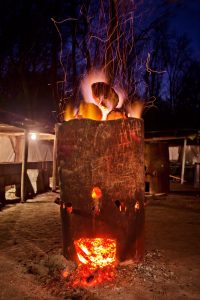
From the Barbecue Crossroads project: Fire box at Scott’s Variety in South Carolina, 2012 © O. Rufus Lovett
Mary McCleary: You have said that your focus in recent years has been on teaching, not doing more photography books. I am a fan of your books but appreciate that you feel a call to teach. You are bound to know you have a reputation as a caring and gifted teacher.
O. Rufus Lovett: Teaching photography has always been my true passion, as it has paralleled my fine art and editorial work for various venues and publications. The teaching gig, (I call it my day job), has always come first. The photographic work has been important as no one could ever use the phrase regarding me, “those who can’t, teach”. I’ve been a firm believer my entire 40-year teaching career that I must practice what I teach, and that, I have done.
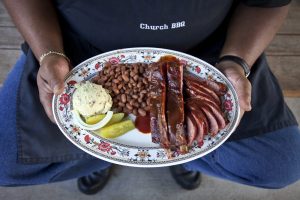
From the Barbecue Crossroads project: Reverend Clint Edison at New Zion Missionary Baptist Barbecue in Huntsville, TX, 2012 © O. Rufus Lovett
Mary McCleary: What are your plans after you retire from teaching?
O. Rufus Lovett: Upon my retirement, not sure exactly when that will be, I will continue to photograph more for myself than for others perhaps. There are places and cultures on the planet I still hope to experience and photograph.
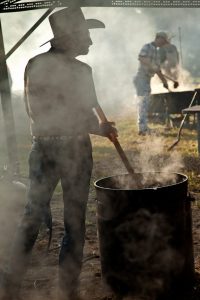
From the Barbecue Crossroads project: Stirring the beans in a 50 gallon cast-iron wash pot in Millheim, TX at a community BBQ, 2012 © O. Rufus Lovett
Mary McCleary: Any particular projects on the horizon? That is beside your daily Facebook posts. I always look forward to those.
O. Rufus Lovett: I may have a book or two left to publish but it’s certainly not a major concern. I am quite satisfied in discovering the next image that excites me.
Mary McCleary: What is the ultimate meaning of what you do? You know I can’t resist asking a heavy question.
O. Rufus Lovett: I’m not sure what the ultimate meaning of what I do is. Others would have to decide that. But, I can tell you what I do that is most meaningful to me. My life’s work has been working with students, and to me there is nothing more important than guiding them to a greater sense of self-esteem and to communicate information that will provide them with some level of success. I realize that I am not 100% successful all the time. My humor and sarcasm probably impedes some of my communication for some, but hopefully many of my students are entertained and will remember more because of my sometimes-unorthodox methods of getting the information across. It is a privilege, and it is with gratitude that I have had the opportunity to teach at Kilgore College.
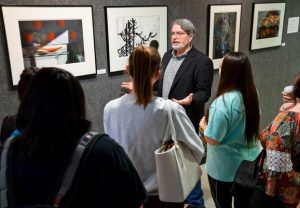
Sept. 3, 2016 LES HASSELL/NEWS-JOURNAL PHOTO
Photographer and Kilgore College instructor O. Rufus Lovett talks to students recently about his work on display at the Ann Dean Turk Fine Arts Center.
Mary McCleary: Well your humor is one of my favorite things about you. So how do you want someone 100 years from today to react to the images you have captured?
O. Rufus Lovett: 100 years from now I would want someone to react to the images I have made by thinking that this was a photographer who possessed an intimate sensibility and compassion for the human condition and realized beauty discovered in ordinary people and found objects in his world.
Mary McCleary: From my view point, you have accomplished those goals. Thanks so much, Rufus, for taking the time to share all of this with us. Thanks also for a longtime friendship I treasure. I am looking forward to seeing what you do in the coming years.

